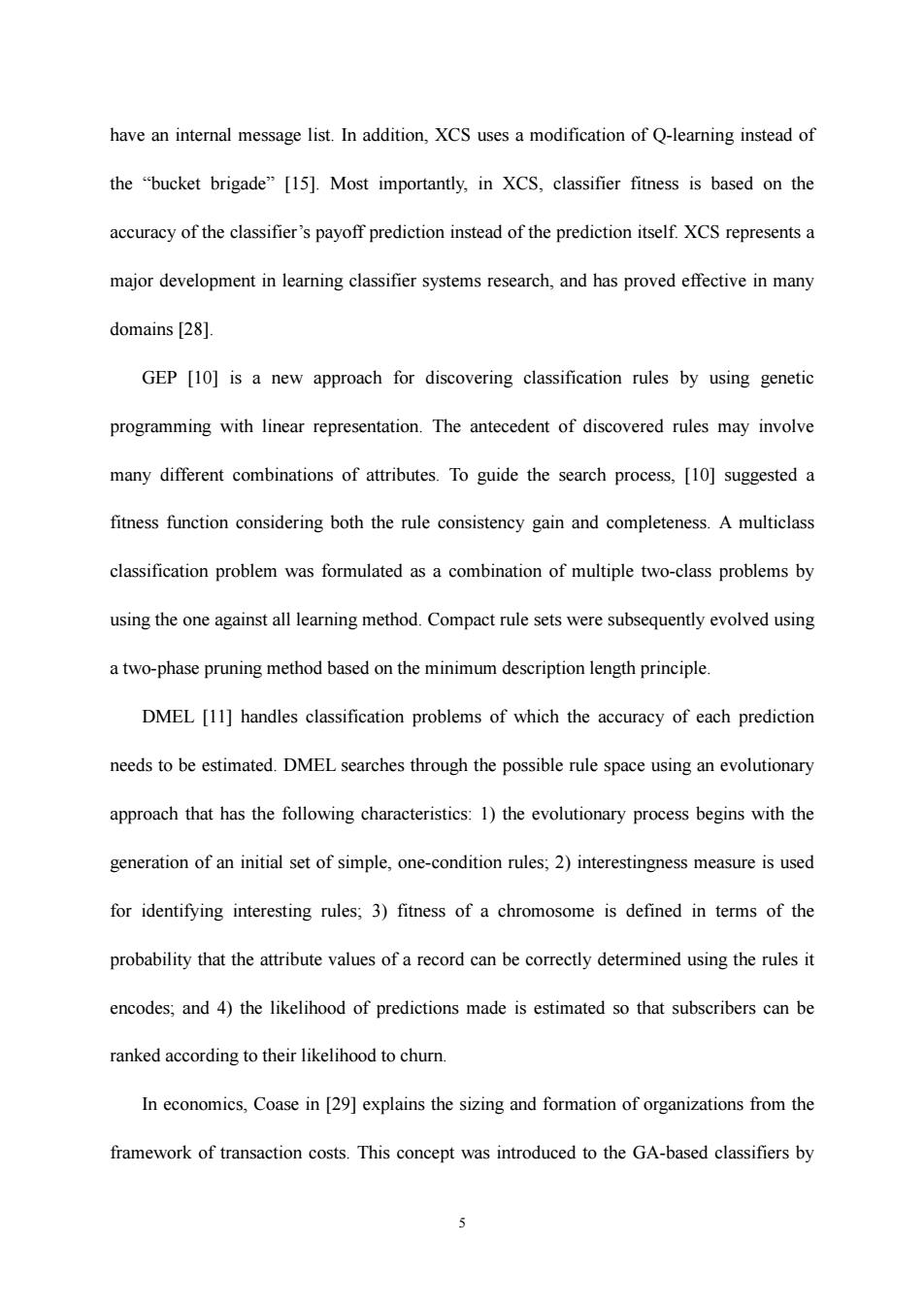正在加载图片...

have an internal message list.In addition,XCS uses a modification of Q-learning instead of the "bucket brigade"[15].Most importantly,in XCS,classifier fitness is based on the accuracy of the classifier's payoff prediction instead of the prediction itself.XCS represents a major development in learning classifier systems research,and has proved effective in many domains [28]. GEP [10]is a new approach for discovering classification rules by using genetic programming with linear representation.The antecedent of discovered rules may involve many different combinations of attributes.To guide the search process,[10]suggested a fitness function considering both the rule consistency gain and completeness.A multiclass classification problem was formulated as a combination of multiple two-class problems by using the one against all learning method.Compact rule sets were subsequently evolved using a two-phase pruning method based on the minimum description length principle. DMEL [11]handles classification problems of which the accuracy of each prediction needs to be estimated.DMEL searches through the possible rule space using an evolutionary approach that has the following characteristics:1)the evolutionary process begins with the generation of an initial set of simple,one-condition rules;2)interestingness measure is used for identifying interesting rules;3)fitness of a chromosome is defined in terms of the probability that the attribute values of a record can be correctly determined using the rules it encodes;and 4)the likelihood of predictions made is estimated so that subscribers can be ranked according to their likelihood to churn. In economics,Coase in [29]explains the sizing and formation of organizations from the framework of transaction costs.This concept was introduced to the GA-based classifiers by 55 have an internal message list. In addition, XCS uses a modification of Q-learning instead of the “bucket brigade” [15]. Most importantly, in XCS, classifier fitness is based on the accuracy of the classifier’s payoff prediction instead of the prediction itself. XCS represents a major development in learning classifier systems research, and has proved effective in many domains [28]. GEP [10] is a new approach for discovering classification rules by using genetic programming with linear representation. The antecedent of discovered rules may involve many different combinations of attributes. To guide the search process, [10] suggested a fitness function considering both the rule consistency gain and completeness. A multiclass classification problem was formulated as a combination of multiple two-class problems by using the one against all learning method. Compact rule sets were subsequently evolved using a two-phase pruning method based on the minimum description length principle. DMEL [11] handles classification problems of which the accuracy of each prediction needs to be estimated. DMEL searches through the possible rule space using an evolutionary approach that has the following characteristics: 1) the evolutionary process begins with the generation of an initial set of simple, one-condition rules; 2) interestingness measure is used for identifying interesting rules; 3) fitness of a chromosome is defined in terms of the probability that the attribute values of a record can be correctly determined using the rules it encodes; and 4) the likelihood of predictions made is estimated so that subscribers can be ranked according to their likelihood to churn. In economics, Coase in [29] explains the sizing and formation of organizations from the framework of transaction costs. This concept was introduced to the GA-based classifiers by